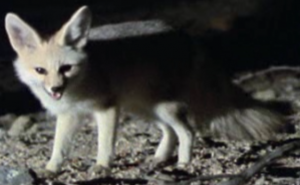The Pale Fox
Bongsong · 9 months ago
Not much is known about the Pale Fox, which can be found in the region between the Sahara Desert and the savannas of Sudan in Africa. The Pale Fox also goes by the name of the Pallid Fox or the African Sand Fox. Because of the sandy and desert terrain that the Pale Fox inhabits, the high heat causes them to spend most of the day underground out of the direct sunlight. The Pale Fox has been known to dig tunnels and dens as far as 2m down and they rest in these before coming out at sunset to hunt for prey. The Pale Fox is an omnivorous animal and will eat anything from plants and vegetation to insects and small rodents. Water is often a rare commodity in the African Sahel and the Pale Fox has survived such dry conditions because of it’s ability to take the water it needs from it’s food. This means that the Pale Fox does not have to worry about finding a watering hole to survive. The Latin name of the Pale Fox is the Vulpes Pallida and there are actually 5 subspecies of this type of fox. Characterised by a thin nose and large ears, the Pale Fox is a sandy-brown colour with a black-tipped bushy tail. They usually weigh around 2-3kgs and females give birth to litters of 3-5 cubs. Preliminary studies have shown that Pale Foxes are actually social and communal in their behaviour, often sharing tunnels and burrows with other foxes. It is estimated that the Pale Fox does not live longer than 10 years, but as with much of the information regarding this type of fox, further studies need to be conducted as the current evidence is inconclusive. It is not even known what or if the Pale Fox has any predators, however they are not considered to be an endangered species.
